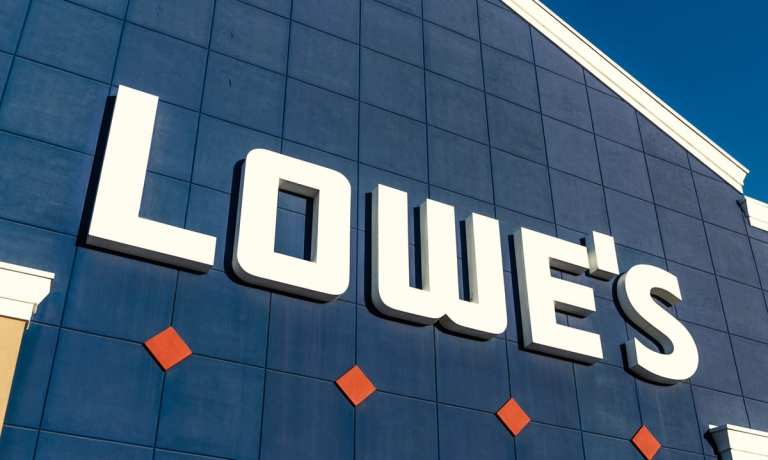
Lowe’s, the second-largest home improvement hardware retailer, said Wednesday (Feb. 24) that its fourth-quarter same-store sales rose 28 percent to $20.3 billion, led by a 121 percent increase in its digital business, far outpacing the 83 percent eCommerce increase reported by rival Home Depot Tuesday.
Officially, the North Carolina-based operator of 2,200 stores in the U.S. and Canada said its earnings increased 41 percent to $1.33 per share, which was better than the average $1.21 of 26 analysts who cover the company.
“Strong execution enabled us to meet broad-based demand driven by the continued consumer focus on the home, with growth over 16% in all merchandising departments, over 19% across all U.S. regions,” Lowe’s President and CEO Marvin Ellison said in the earnings announcement.
For the year, Lowe’s delivered record revenues of nearly $90 billion as roughly 20 million people per week shopped at its stores, which are staffed by over 300,000 employees.
The company also said it spent over $100 million in COVID-related support of frontline hourly associates in Q4, bringing its total support of keeping customers and workers safe for the year to $900 million.
Looking Ahead
Lowe’s and Home Depot have both benefited greatly from the surge in home improvement and gardening fostered by the pandemic’s lifestyle changes, yet both have been clear that they do not expect the uptrend to be permanent.
In December, Lowe’s unveiled its “Total Home strategy” to enhance customer engagement and grow market share by increasing focus on professional customers, while also expanding its online business, modernizing its installation services, as well as increasing its capital investments to expand its supply chain network and enhance omnichannel capabilities.
Although the company has closed the books on a record 2020 and said its Q4 momentum has carried into February, it remained cautious in its full year guidance given the uncertainties surrounding COVID.
“The Company is reiterating its planning expectations [from Dec. 9] for three potential scenarios for 2021 which assume modest mix-adjusted market contraction. In each of these scenarios, the Company expects to drive further market share gains and operating margin improvement,” the latest statement said.
For its part, Home Depot issued a similar outlook Tuesday, saying it was “limited in its ability to forecast demand for fiscal 2021” and was not able to provide guidance at this time.
“As we look ahead to fiscal 2021, while we are not able to predict how consumer spending will evolve, if the demand environment during the back half of fiscal 2020 were to persist through fiscal 2021, it would imply flat to slightly positive comparable sales growth and operating margin of at least 14 percent,” said Home Depot CFO Richard McPhail.
The Upper Hand
Clearly the two home improvement giants remain in a long-running battle and compete for the same customers in most markets, and face identical business climates, a factor that puts a premium on execution. While both companies currently have about 2,200 stores, the Atlanta-based market leader is able to drive a lot more business through its locations.
For example, in 2020, Home Depot earned $12.9 billion on $132 billion in sales, while in comparison, Lowe’s made $5.8 billion on $90 billion in total revenue last year. Put another way, Home Depot earned twice as much last year on 50 percent more revenue.
As far as investors are concerned, Home Depot is still roughly twice as valuable as Lowe’s with a market cap of nearly $290 billion, versus Lowe’s $123 billion. However, that gap has shrunk over the past 12 months, where Lowe’s shares have risen by 36 percent, or about three times the pace of the 12 percent gain realized by its rival.